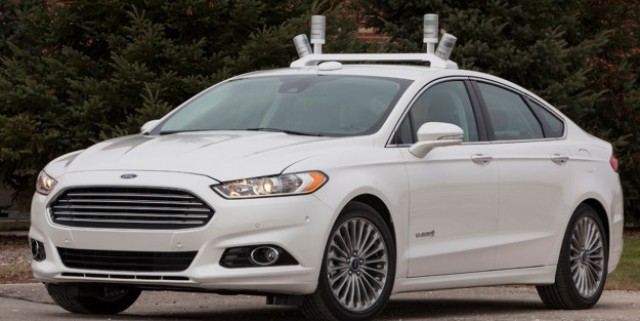
Ford has revealed its first autonomous car, a prototype Ford Mondeo hybrid, as part of an ongoing research and development program built around the car maker’s vision for future mass transportation.
The automated Ford Mondeo (called Fusion in North America) research vehicle is a product of Ford’s ‘Blueprint for Mobility’ program, which envisions a future of driverless cars that will interact with one another after the year 2025.
Developed in conjunction with the University of Michigan and State Farm insurance group, the Ford Mondeo is a testbed for current and future sensory systems and driver-assist technologies. The car uses four infrared sensors to scan the road up to 60 metres ahead and 2.5 million times per second, developing a 3D image of the vehicle’s surrounding space. The sensors then identify all objects in the space dense enough to redirect light, advising the car to steer away from any obstacles.
“The Ford Fusion hybrid automated vehicle represents a vital step toward our vision for the future of mobility,” Ford executive chairman Bill Ford said.
“We see a future of connected cars that communicate with each other and the world around them to make driving safer, ease traffic congestion and sustain the environment.”
The test vehicle – a close relative of the new-generation Ford Mondeo that will go on sale locally in the second half of 2014 – debuts several new technology concepts for Ford, which will gradually be introduced throughout the Blue Oval’s passenger car range.
In the short-term, Ford is aiming to introduce traffic alert functions in all its cars, as well as technologies that will assist parking and driving in slow-moving traffic.
In the mid-term, Ford is aiming to introduce vehicle-to-vehicle communications systems, allowing cars to ‘autopilot’, driving in tandem and creating denser driving patterns.
In the longer-term, fully autonomous driving and parking technologies will be introduced, which will combine with Ford’s system of communicating cars to create a “fully integrated transportation ecosystem”.
“In the future, automated driving may well help us to improve driver safety, and manage issues such as traffic congestion and global gridlock,”Ford global product development group vice president Raj Nair said.
“With the automated Ford Fusion hybrid research project, our goal is to test the limits of full automation and determine the appropriate levels for near- and mid-term deployment.”
Ford’s attempt at developing a driverless car follows those of several other car makers. In September, Mercedes-Benz announced a highly-specced S-Class drove more than 125km on public roads without a driver’s input, and Nissan is currently testing an autonomous Leaf EV in Japan. Earlier this month, Volvo also released details of its public autonomous vehicle testing program.





